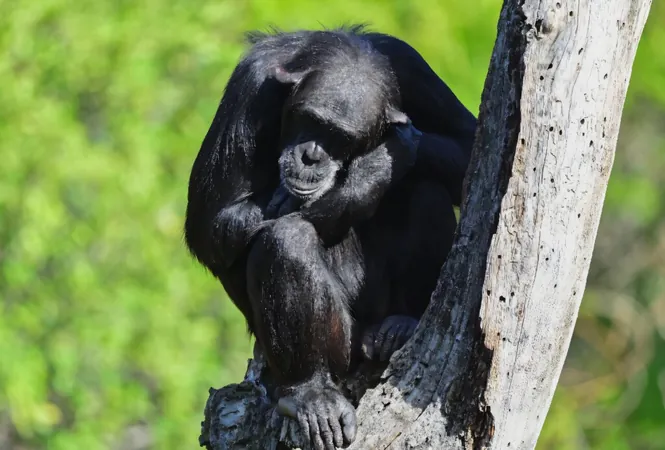
Chimps Are Enhancing Their Tool Skills—Here's What It Means for Human Evolution!
2024-11-24
Author: Charlotte
Introduction
In a revelation that could have come straight from 'Planet of the Apes,' a recent study published in Science reveals that chimpanzees are significantly improving their tool-using capabilities—a slow evolution influenced by shared knowledge and migrations among different groups over thousands of years.
These findings are particularly intriguing as they provide insight into our own evolutionary past. Cassandra Gunasekaram, the study's lead author and a doctoral student at the University of Zurich, highlighted to AFP that this underscores the possibility that our ancient ancestors utilized social bonds to advance their technological proficiencies.
Connections Fuel Innovation
In their groundbreaking research, scientists combined genetic data that mapped ancient chimpanzee migrations across Africa with observations of 15 different foraging behaviors observed in multiple chimp populations and their four subspecies. These behaviors were classified into three tiers:
1. No tools used 2. Simple tools employed, such as using chewed leaves to soak up water from tree crevices. 3. Complex toolsets, involving multifunctional tools.
One fascinating instance of this advanced tool use was recorded in the Congo, where chimpanzees use sturdy sticks to create tunnels leading to termite nests and alter plant stems into brushes to effectively 'fish' for termites.
The study concluded a notable correlation between sophisticated tool usage and groups that engaged in genetic exchanges over the last 5,000 to 15,000 years. This suggests that behaviors flourished in groups that interacted with one another, demonstrating the importance of social connections in cultural knowledge transfer.
In regions where three different subspecies coincided, the level of tool complexity peaked, showcasing how collaboration and cross-group exchanges accentuate cultural learning. In stark contrast, simpler behaviors appeared to be less reliant on migration and were likely developed independently across various environments.
Parallel to Human Progress
Gunasekaram's findings draw an interesting analogy to human technological advancements. She points out how the exchange of ideas and gradual innovations have catapulted human technology from rudimentary tools to the sophisticated gadgets we possess today. 'Some tools are so complex that they can't simply be reimagined by a single individual,' she said.
However, unlike humans, chimpanzees have fewer chances to meet new individuals and exchange ideas, as they typically migrate slowly—primarily led by sexually mature females seeking to avoid inbreeding.
One of the primary hurdles in studying chimpanzee culture is the limited timeframe of observation—scientific research on the species has only been prevalent for about a century. Moreover, the nature of chimpanzee tools—primarily composed of perishable materials like sticks and stems—complicates efforts to trace their historical evolution.
A Glimpse into the Future
So, could chimpanzees ever match human ingenuity? The consensus is unlikely. However, over time, these fascinating creatures could enhance their foraging efficiency even further. Certain populations have already demonstrated advanced techniques, such as using hammers and anvils made from stone to crack nuts, and one particularly clever group has even concocted a stabilizer for their anvil!
As chimpanzees continue to grow their tool-using capabilities, we gain not only a deeper understanding of their culture but also invaluable insights that could shed light on the origins of our own technological evolution. The journey of refinement in both species proves that innovation can stem from collaboration—whether it be in the animal kingdom or human civilization.
Stay tuned for more incredible discoveries that bridge the gap between human and animal intelligence!









 Brasil (PT)
Brasil (PT)
 Canada (EN)
Canada (EN)
 Chile (ES)
Chile (ES)
 España (ES)
España (ES)
 France (FR)
France (FR)
 Hong Kong (EN)
Hong Kong (EN)
 Italia (IT)
Italia (IT)
 日本 (JA)
日本 (JA)
 Magyarország (HU)
Magyarország (HU)
 Norge (NO)
Norge (NO)
 Polska (PL)
Polska (PL)
 Schweiz (DE)
Schweiz (DE)
 Singapore (EN)
Singapore (EN)
 Sverige (SV)
Sverige (SV)
 Suomi (FI)
Suomi (FI)
 Türkiye (TR)
Türkiye (TR)